
Ever wondered about safe co-sleeping positions?
Co-sleeping is by far one of my most enjoyable topics of discussion.
Co-sleeping doesn’t have to be a scary subject matter.
In fact, if you practice safe co-sleeping positions you shouldn’t have any problems at all.
There are a lot of myths that fly around about co-sleeping and a lot of them are actually unfounded.
What is Co-Sleeping?
A lot of people confuse co-sleeping with bed-sharing.
Let’s make the distinction for the purposes of moving forward.
Co-sleeping is where mother and baby sleep in the same room but not necessarily in the same bed space.
Bed-sharing is where mother and baby use the same sleep space such as a bed or a chair.
Generally speaking, co-sleeping can be anywhere where parent and baby are in the same place sleeping.
Allowing your baby to sleep in a crib or an attachment crib next to you is considered co-sleeping.
In fact, having your baby sleep in an attached crib is considered to be a very safe co-sleeping position.
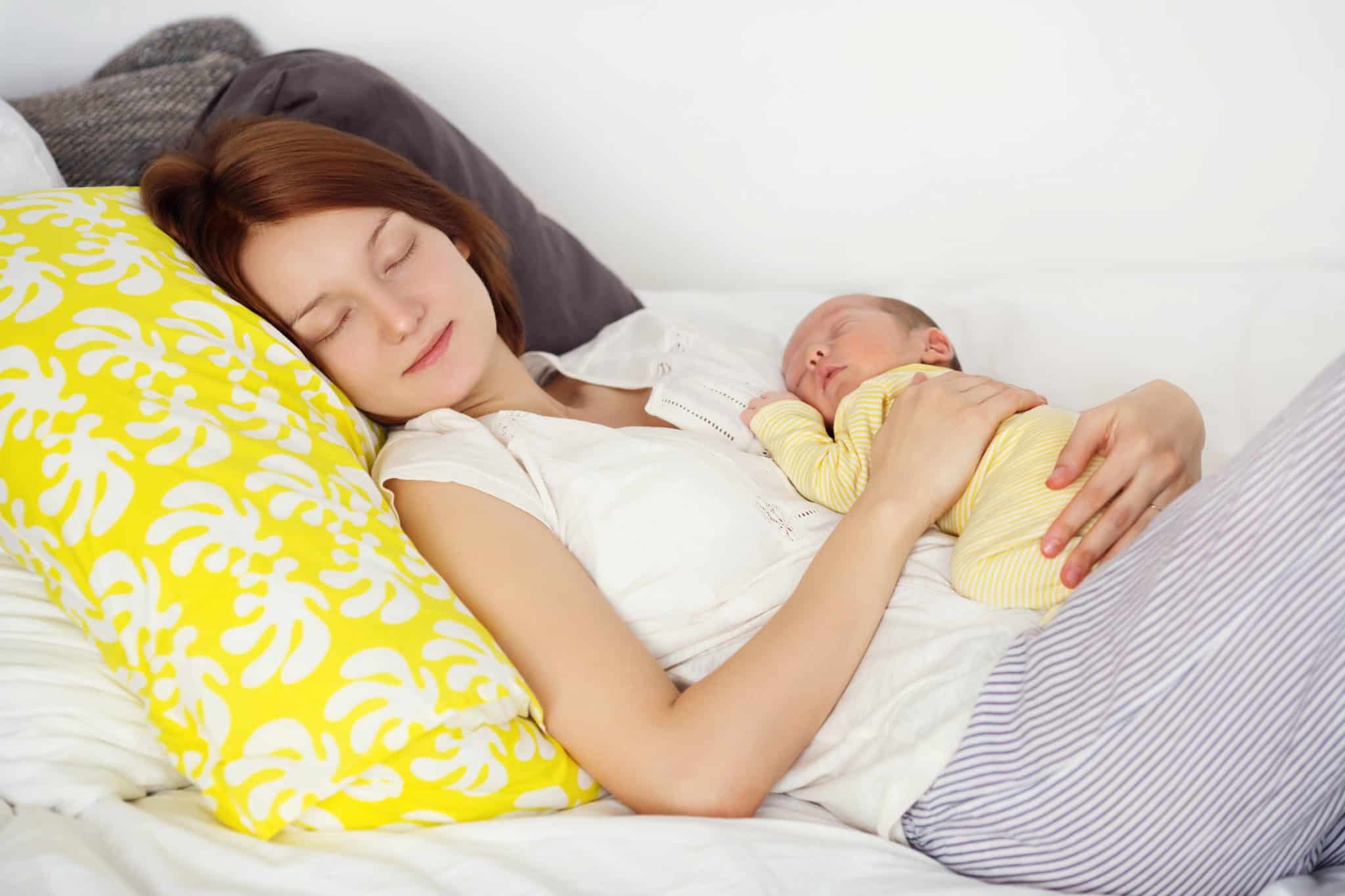
Why is Co-Sleeping Considered Negative?
Co-sleeping is considered to be negative by a lot of people because in general people are very quick to hear about bad things that happen.
When was the last time you heard a successful co-sleeping story circulating the school playground?
Chances are that it will never happen.
Why?
Because it’s not much of a story for people to re-tell.
There is simply not enough sensationalism in good news.
Unfortunately, people prefer to spread stories of fear.
That is not to say there aren’t any unfortunate incidents that can occur if safe co-sleeping positions are not adhered too.
The point is that it can happen but it’s not as common or as likely to happen in the way that people think.
Related posts:
- How to prepare your home now for baby on a small budget
- How to bathe a newborn baby
- Why you don’t need creams to treat diaper rash
- The 4 best co sleeper bassinets for your new baby
At What Age is Co-Sleeping Safe?
Experts will say that you should co-sleep (sleep with a baby in your room) until they are at least 1 year of age.
If you really feel the need for your child to have their own room then you should do it from aged 6 months onwards.
If you are going to opt for the 6 months stance then I would highly recommend you use some type of baby monitor.
I really like this one as it has the ability to record video via an app which means you get to capture some really great moments that might not have been able to get otherwise.
You can get baby monitors that just pick up sound. So if your baby cries or makes a noise the monitor will pick it up.
If you have the money you can opt for more advanced technology.
These baby monitors have a visual picture so you can see if your baby is in distress.
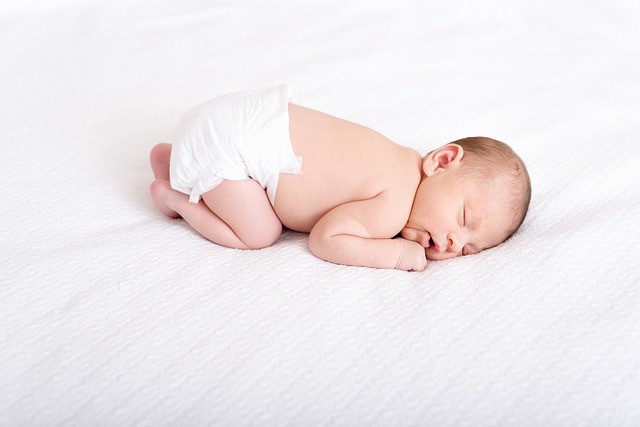
Finding safe co sleeping positions for your baby
What Are Some Safe Co-Sleeping Positions and Bed Sharing Positions?
1. Sleep Baby on Their Back
Sleeping your baby on their back is supposed to lower the risk of SIDS (sudden infant death syndrome).
If you are breastfeeding in bed, once your baby has finished feeding you should turn them back onto their backs to continue sleeping.
This is much safer for your baby.
I tend to lay my babies face down to sleep but that is because I feel confident enough to do that.
I find that my children sleep much better and for longer this way.
If you are unsure or do not feel comfortable about this then I would suggest you do not do this and stick to the rules from the experts.
You must be 1000% comfortable with your decision.
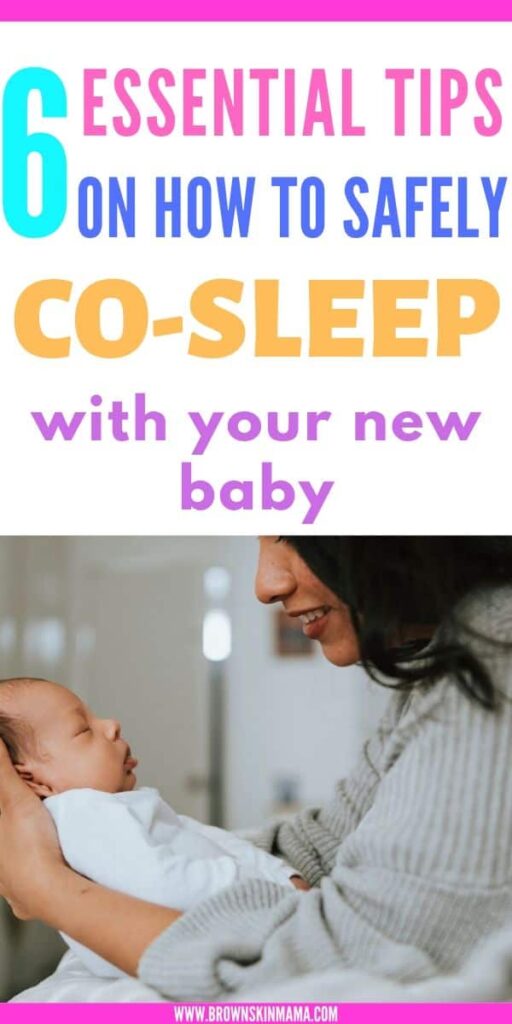
2. Make Your Sleeping Space Safe
Make sure there is nothing in the way that could harm your baby whilst they are in your bed.
Your baby should not sleep on a pillow as they are too young, this could cause suffocation. (source)
Your bedding should not be able to cover over your babies face.
Make sure there are also no spaces that your baby could easily get lodged into.
It’s a known fact that babies can sometimes wriggle enough that they can get lodged between the headboard and mattress.
When you are a new mom it’s easy to become very tired and fall asleep when you least expect it.
Don’t think that you will sleep the same way that you did before you had your baby.
You are much more likely to deep sleep, even if only for brief periods of time.
Even though your baby doesn’t yet have the capability to physically get up and move yet, they can wriggle more than you think.
It’s very important that your baby doesn’t sleep too close to the edge of the bed in case they roll-off.
3. Keep the Temperature of the Room Moderate
You must keep the temperature of the room where your baby will be sleeping between 16-20 degrees C (61-68 degrees F).
Remember your baby’s body temperature will be very different from yours and it will take some time for them to adjust.
Your room temperature must remain consistent for them. A Gro-Egg Room Thermometer can help you do that.
I used this for all my children and it took all the worry away for me.

4. Dress Your Baby Very Well
Make sure that your baby is dressed well at night time so that they don’t need bedsheets.
Putting bed sheets on your baby can pose a risk as they could get caught up in them.
By making sure your baby is wearing a baby sleep suit you will be able to keep them warm enough during the night without needing any sheets at all.
The same will go for you too since your baby will be feeding and possibly sleeping next to you.
Make sure that you dress appropriately so that you won’t need your bedsheets.
5. Use a Side Sleeper
Using a side sleeper if you decide on co-sleeping will help you to feel safe once you fall asleep.
Side sleepers are designed so that your baby can sleep next to you without the fear of you rolling over and squashing them.
Co-sleeping doesn’t have to be a major concern if you follow these safe co-sleeping positions and tips.
6. Try using the Swaddle me by your side co-sleeper bassinet
The Swaddle Me Bassinet is a great item because it’s a happy medium between having a side co-sleeper and bed-sharing.
This bassinet allows your baby to sleep in the same bed as you without you being able to accidentally roll over your baby.
If you want to know more about the best co-sleeper bassinets on the market then you should have a read of this.
What Are the Bed-Sharing with Baby Benefits?
There are some great benefits to bed-sharing with your baby.
1. You create a natural mother-baby bond with your child
2. It helps with breastfeeding your newborn. As your baby sleeps next to you it helps your body to produce milk.
This is especially helpful if you have been struggling with low milk supply.
3. You get a better nights sleep because your baby is sleeping next to you so you don’t have to keep getting out of bed in order to feed.
I slept like this with all 4 of my children and it really helped me get some much-needed rest during that postpartum phase.
You get to sleep and so will your baby as they can sense that you are near.
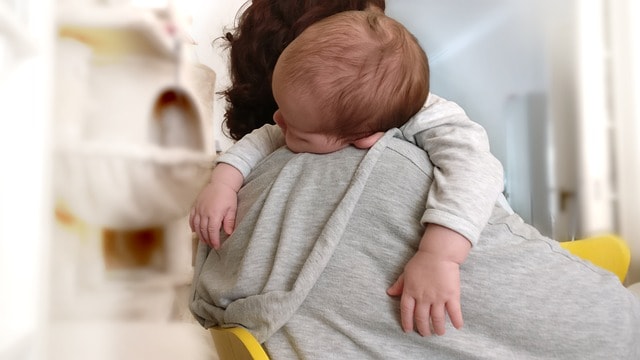
Some mothers enjoy sleeping with a newborn on their chest.
Personally, I loved doing this as I felt a special connection to my child this way.
This is a great time to have some really good skin to skin contact with your newborn.
Is it Safe To Co-Sleep With Your Newborn on Your Chest?
Yes and no.
I have allowed my babies to sleep this way many times but only under certain conditions.
Never if I am too tired and could fall asleep myself.
If you sleep while your baby is asleep on your chest they could easily roll off.
You don’t want that to happen.
I sometimes allow my child to sleep on my chest for the purpose of skin to skin contact when I am in my maternity rocking chair as I feel most relaxed in this position.
I do pick and choose the time to do this because it can be dangerous.
Maternity rocking chairs are a great investment for new moms as it puts you in the most comfortable position. You also get to keep all your little snacks in the pockets of the chair too!
The downside to allowing your newborn to co-sleep on your chest is that they can quickly become used to it.
The sound of your heartbeat, your smell and of course the closeness to your breast milk if you are breastfeeding.
Whilst this might seem really cute right now. It’s not a very good long-term practical plan if you ever decide you need to actually do anything other than sit down.
Believe me, I’ve been there.
Final thoughts on safe co-sleeping positions
If you can practice safe co-sleeping positions then there is no reason why you shouldn’t do it.
Make sure both you and your partner are happy to do this as it affects both of you especially if you decide to bed share with your baby.
I have done bed-sharing with all of my children and would never change that.
It has worked perfectly for me and my family. If you do it safely, you shouldn’t be worried about it.
Related posts:
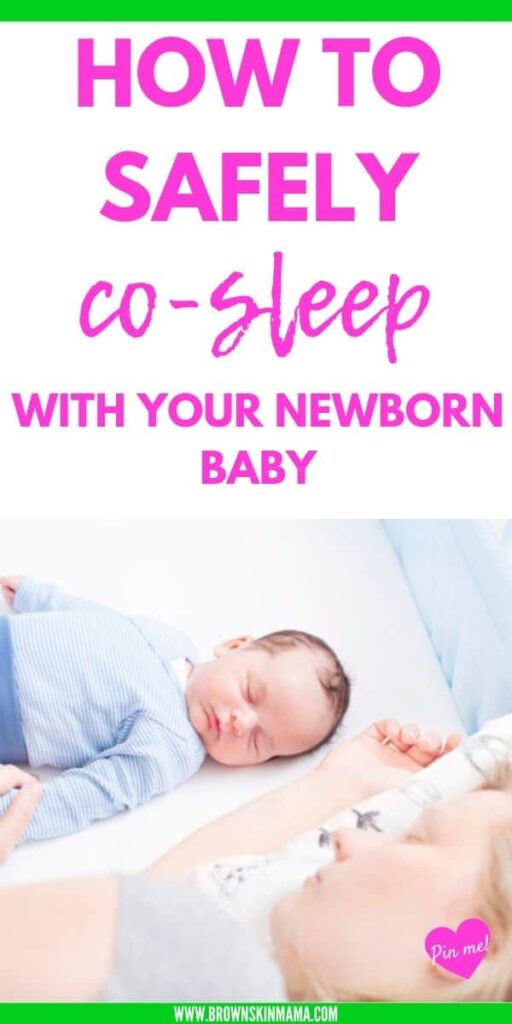
Leave a Reply
You must be logged in to post a comment.